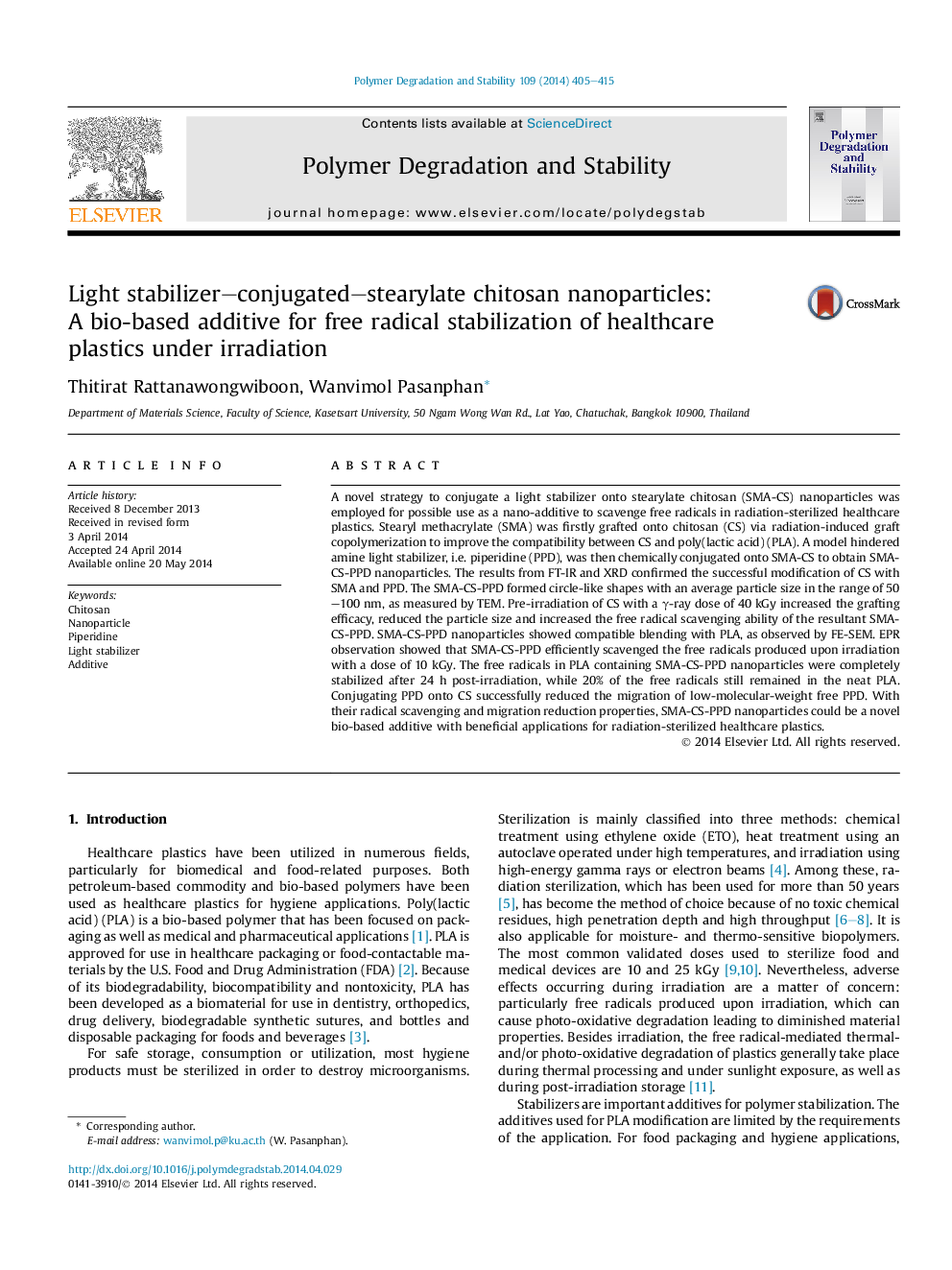| Article ID | Journal | Published Year | Pages | File Type |
|---|---|---|---|---|
| 5201701 | Polymer Degradation and Stability | 2014 | 11 Pages |
A novel strategy to conjugate a light stabilizer onto stearylate chitosan (SMA-CS) nanoparticles was employed for possible use as a nano-additive to scavenge free radicals in radiation-sterilized healthcare plastics. Stearyl methacrylate (SMA) was firstly grafted onto chitosan (CS) via radiation-induced graft copolymerization to improve the compatibility between CS and poly(lactic acid) (PLA). A model hindered amine light stabilizer, i.e. piperidine (PPD), was then chemically conjugated onto SMA-CS to obtain SMA-CS-PPD nanoparticles. The results from FT-IR and XRD confirmed the successful modification of CS with SMA and PPD. The SMA-CS-PPD formed circle-like shapes with an average particle size in the range of 50-100 nm, as measured by TEM. Pre-irradiation of CS with a γ-ray dose of 40 kGy increased the grafting efficacy, reduced the particle size and increased the free radical scavenging ability of the resultant SMA-CS-PPD. SMA-CS-PPD nanoparticles showed compatible blending with PLA, as observed by FE-SEM. EPR observation showed that SMA-CS-PPD efficiently scavenged the free radicals produced upon irradiation with a dose of 10 kGy. The free radicals in PLA containing SMA-CS-PPD nanoparticles were completely stabilized after 24 h post-irradiation, while 20% of the free radicals still remained in the neat PLA. Conjugating PPD onto CS successfully reduced the migration of low-molecular-weight free PPD. With their radical scavenging and migration reduction properties, SMA-CS-PPD nanoparticles could be a novel bio-based additive with beneficial applications for radiation-sterilized healthcare plastics.
